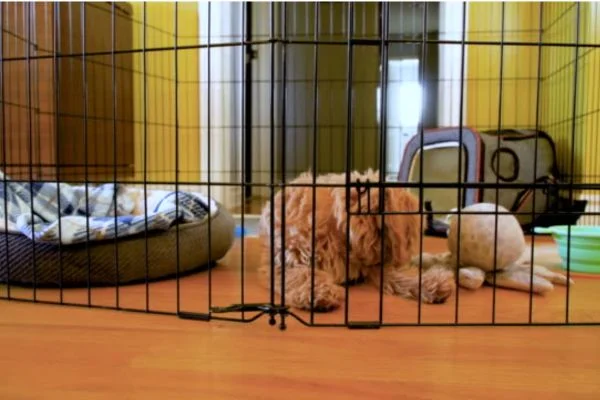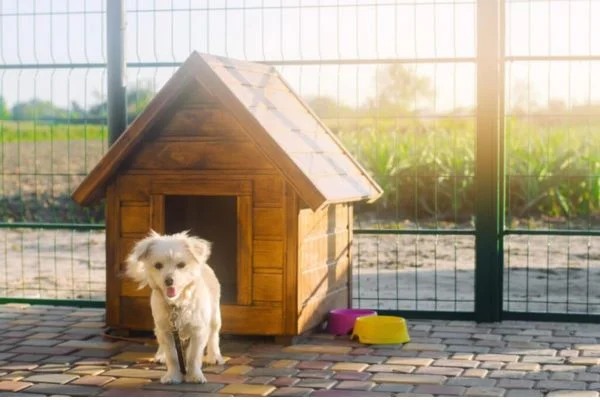If you want to build a safe and durable wood floor for your dog’s kennel, you’ve come to the right place. This blog post will provide step-by-step instructions on How To Build A Wood Floor For A Dog Kennel away from home. Let’s get started!
How To Build A Wood Floor For A Dog Kennel | Step By Step Guide
Step 1 – Preparing the Materials
The first step is gathering all the materials you will need. You will need plywood, Visqueen sheeting, 2×4 lumber, screws, a drill, a saw (or jigsaw), a mitre saw (optional), a tape measure, a hammer or a nailer. Make sure you have enough of each material to cover your kennel’s entire floor area.
You may also want to purchase some sealant or stain to protect your wood from moisture and damage from chewing or clawing. This is especially important if your kennel will be exposed to outdoor elements like rain or snow.
Step 2 – Measuring and Cutting Plywood
Next, use your tape measure to measure where each piece of plywood will go in the kennel. Once you have figured out how many pieces of plywood are needed (the size depends on the size of your kennel), use a saw or jigsaw to cut them into the appropriate measures. Ensuring they fit well together is key here, so take your time!
Also Read: How Long Does Lvp Flooring Last?
Step 3 – Installing Plywood Pieces in Kennel
Now that all the pieces have been cut out, it’s time to install them in the kennel! Start by laying down a layer of Visqueen sheeting over the bottom part of the kennel, as this will help protect against moisture seeping through from below.
Then start placing each piece of plywood one at a time until all pieces are securely fastened down with screws and nails. Make sure there are no gaps between each piece so that it forms a solid base for your pup’s feet!
Step 4 – Attaching Lumber Around Perimeter
Finally, attach 2×4 lumber around the perimeter of the plywood to form an even more solid foundation for your pup’s paws! Make sure these boards are secured with nails/screws so that they don’t move around when your pup steps.
You may also want to add some sealant or stain onto these boards before attaching them, as this will help protect against water damage and other wear & tear caused by active pups!
Also Read: How To Clean Dog Kennel Flooring?
What Is The Best Flooring For A Raised Dog Kennel?

When it comes to the best flooring for a raised dog kennel, there are quite a few factors to consider. Some of these include ease of cleaning, durability, temperature control, and comfort — all of which will provide your pup with optimal living conditions.
Concrete is the most popular option for raised dog kennels due to its low-maintenance upkeep and long-lasting material. It also works as an effective heat conductor; this means that concrete can absorb some of the coldness from outside during colder months or at night when temperatures dip out and keep your pup warm inside.
However, while concrete may be easy to clean on the one hand, some dogs have been known to scratch or dig their way out — so you’ll have to be diligent in making sure yours will stay put!
Wood floors are another great alternative for raising a pet kennel because they’re inexpensive and offer natural insulation that helps regulate temperatures better than other materials. Along with this benefit comes an increased risk for wet spots since wood absorbs moisture more readily than other surfaces.
However, if sealed properly, wood floors won’t cause this issue like carpets often do. In addition, wood floors are much easier on joint pain than tile or cement, making them an ideal choice for older pets suffering from arthritis or similar conditions.
Carpeted floors are also becoming increasingly popular in pet homes due to their soft surface helping owners minimize joint pain caused by hard surfaces such as stone or tiles found in standard houses. However, regular maintenance is key here since wet spots can quickly become breeding grounds for bacteria if taken care of after some time.
Generally, wool loop carpet tends to be the most durable against claw marks. Still, any type will work as long as they’re regularly cleaned & vacuumed with industrial-strength vacuums powerful enough to extract deep-down dirt lodged between fibres without damaging them over time.
Whatever style you choose, it’s important to make sure whatever option provides maximum comfort & safety needs, whether indoors or outdoors – ultimately, the decision is yours. Remember, not all materials are created equally; each with pros and cons needs to be carefully weighed before deciding what best fits the individual pet home environment!
Also Read: What To Put On Floor Of Outdoor Dog Kennel?
Bottom Line:
Building a wood floor for your dog’s kennel doesn’t have to be difficult – follow the steps of our guide How To Build A Wood Floor For A Dog Kennel, and you’ll be able to create a safe and durable surface for Fido in no time!
With careful measurements, cutting tools, screws/nails/sealant/stain – and plenty of TLC – you can create an awesome home away from home for our four-legged friends who deserve only the best.
Investing extra effort into building something special like this can make all the difference in ensuring our furry friends stay happy & healthy while they’re not at home with us!



